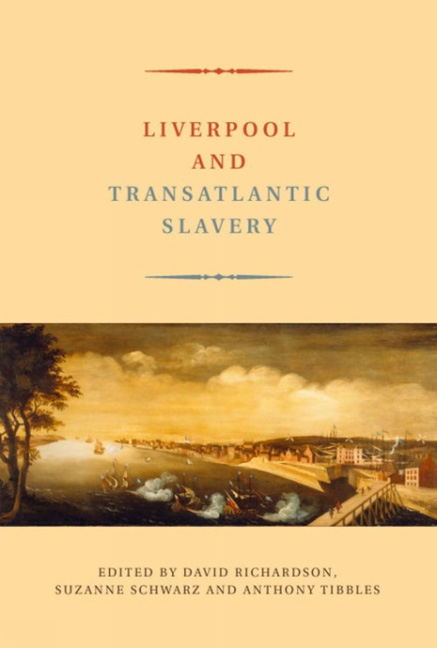Book contents
- Frontmatter
- Content
- Preface
- Notes on Contributors
- Introduction Liverpool, the African Slave Trade and Abolition Thirty Years On
- 1 Liverpool's Dominance in the British Slave Trade, 1740–1807
- 2 African Agency and the Liverpool Slave Trade
- 3 Human Capital in the British Slave Trade
- 4 Liverpool's Slave Trade to the Colonial Chesapeake: Slaving on the Periphery
- 5 The Liverpool Slave Trade, Lancaster and its Environs
- 6 The Atlantic Slave Trade and African Ethnicities in Seventeenth-Century Jamaica
- 7 The Wealth and Social Aspirations of Liverpool's Slave Merchants of the Second Half of the Eighteenth Century
- 8 ‘Cemented by the Blood of a Negro’? The Impact of the Slave Trade on Eighteenth-Century Liverpool
- 9 Commerce, Civilization and Christianity: The Development of the Sierra Leone Company
- 10 Abolitionism in Liverpool
- Index
8 - ‘Cemented by the Blood of a Negro’? The Impact of the Slave Trade on Eighteenth-Century Liverpool
- Frontmatter
- Content
- Preface
- Notes on Contributors
- Introduction Liverpool, the African Slave Trade and Abolition Thirty Years On
- 1 Liverpool's Dominance in the British Slave Trade, 1740–1807
- 2 African Agency and the Liverpool Slave Trade
- 3 Human Capital in the British Slave Trade
- 4 Liverpool's Slave Trade to the Colonial Chesapeake: Slaving on the Periphery
- 5 The Liverpool Slave Trade, Lancaster and its Environs
- 6 The Atlantic Slave Trade and African Ethnicities in Seventeenth-Century Jamaica
- 7 The Wealth and Social Aspirations of Liverpool's Slave Merchants of the Second Half of the Eighteenth Century
- 8 ‘Cemented by the Blood of a Negro’? The Impact of the Slave Trade on Eighteenth-Century Liverpool
- 9 Commerce, Civilization and Christianity: The Development of the Sierra Leone Company
- 10 Abolitionism in Liverpool
- Index
Summary
In August 2000 Liverpool City Council issued a formal apology for the role of the town in the eighteenth–century slave trade. This may not have been merely a laudable act of retrospective atonement for a painful aspect of the city's history, it was also recognition of the extent to which the town, as well as individual merchants, appeared to have benefited from the ‘African trade’. There was a tacit sense of unease that Liverpool owed more to the trade than the gaining (and losing) of a number of individual family fortunes. This chapter aims to explore the extent to which this sense of unease was justified by examining the cultural, physical and economic impact of the slave trade on late eighteenth–century Liverpool.
Liverpool's half century of heavy involvement in the slave trade generated a complex cultural legacy. The moral censure of the ‘Liverpool men’ by evangelicals and Dissenters was to shape subsequent perceptions of the town's eighteenth–century merchants as brutal and boorish. In 1823, for example, James Cropper wrote of slavery's ‘dreadful and pernicious effects, as well on the master as on the slave, and even on the moral character and habits of the community at large’. This theme has been repeated by historians: in 1952 S. G. Checkland was to argue that the attitudes of Liverpool's commercial elite had been degraded by involvement in slaving (and privateering); and I. C. Taylor reinforced this argument twenty years later by suggesting that the construction of high–density working–class housing was directly linked to Liverpool's experience of the slave trade. More recently, Jon Stobart has argued that the late eighteenth–century Liverpool elite was so self–conscious about its reputation for inhumanity that it distanced itself from the slave trade by deliberately embracing a more cultivated image. He asserts that this was embodied in the establishment of cultural institutions, such as the Lyceum Library, the Botanic Garden and the Liverpool Institution, in the first two decades of the nineteenth century.
It is understandable that the descendants of the eighteenth–century mercantile elite wished to deny any connection between their own ancestors and such a discreditable activity.
- Type
- Chapter
- Information
- Liverpool and Transatlantic Slavery , pp. 227 - 251Publisher: Liverpool University PressPrint publication year: 2007



